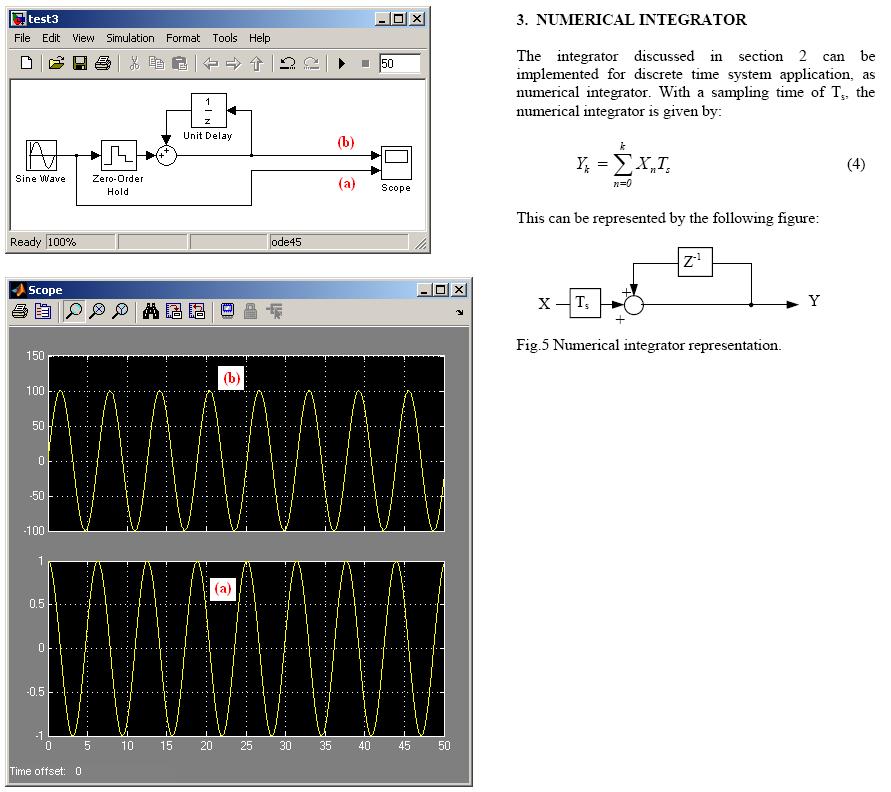powersys
Advanced Member level 1
matlab simulink numerical integration
I wish to implement Eq(4) in MATLAB/SIMULINK. I model the Ts block using Zero-Order Hold block. The amplitude of the sinewave is 1, frequency is 1, and phase shift is pi/2. The amplitude of the output, as can be seen in the figure below, is 100 times larger than the amplitude of the sinewave. Could someone pls advise which part in the SIMULINK model that causes the 'amplification'? (Hint: Integration of sinewave (shifted by pi/2) will give 'cosine wave').
Pls advise. Thanks.

I wish to implement Eq(4) in MATLAB/SIMULINK. I model the Ts block using Zero-Order Hold block. The amplitude of the sinewave is 1, frequency is 1, and phase shift is pi/2. The amplitude of the output, as can be seen in the figure below, is 100 times larger than the amplitude of the sinewave. Could someone pls advise which part in the SIMULINK model that causes the 'amplification'? (Hint: Integration of sinewave (shifted by pi/2) will give 'cosine wave').
Pls advise. Thanks.
